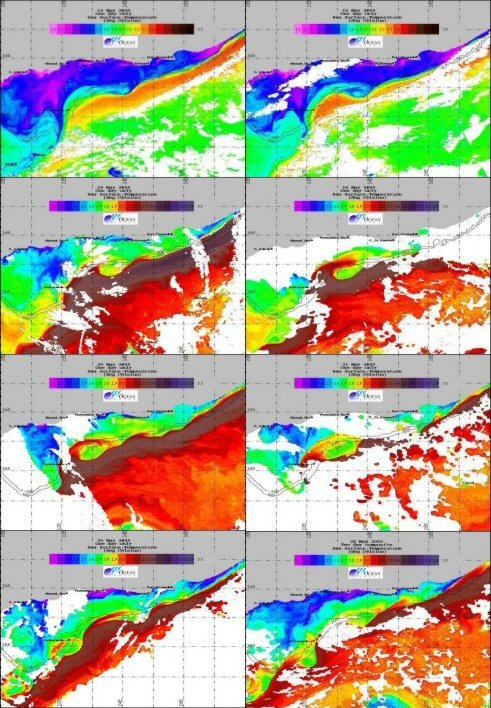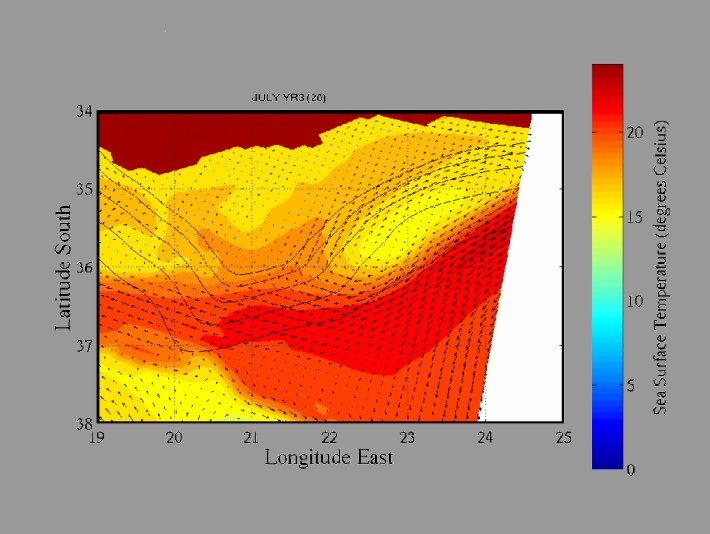Quasi Permanent Cyclonic Gyre
Dowload the PDF of this lesson by clicking here
 |
It was suggested by Swart and Largier (1987) that cyclonic frontal eddies along the eastern edge of the Agulhas Bank were responsible for shelf edge upwelling and the consequent movement of cold water (Indian Ocean Central Water) onto the continental shelf. Other mechanisms of shelf edge upwelling have also been put forward, namely up-slope veering of the bottom layer of a boundary current and Ekman transport caused by sustained opposing winds. Up-slope veering results from a disturbance of the goestrophic balance by sidewall friction along the shelf slope (Swart and Largier, 1987). Shear edge phenomena are most prevalent along the eastern Agulhas Bank where the shelf widens. These phenomena include frontal (boundary) eddies in which upwelling takes place. Deeper water is drawn upwards in the center. It is thought that the cyclonic vorticity induced from the adjacent Agulhas Current is the driving force behind the dynamics (Lutjeharms, Catzel and Valentine, 1989). The evolution of a large eddy in the Agulhas Bank Bightis shown in Figure 1 (after Roberts et al. in prep.). |
|
Figure 1 |
|
| (Click on individual images for enlargement of satellite image) |
Penven, Lutjeharms, Marchesiello, Roy and Weeks (2001) used a model to investigate the origin of these cyclonic eddies. The model showed a cyclonic eddy between the Agulhas Current and the Agulhas Bank Bight. In the model, cyclonic eddies are prevalent at this location which is consistent with satellite altimetry and sea surface temperature. These trapped eddies often escape around the tip of the Agulhas Bank. Upwelling is usually associated with cyclonic eddies in the southern hemisphere (Penven et al., 2001).
 |
|
|
Figure 2 |
CLASSIC PAPER
Penven, P., Lutjeharms, J. R. E., Marchesiello, P., Roy, C. and Weeks, S. J. (2001). Generation of cyclonic eddies by the Agulhas Current in the lee of the Agulhas Bank. Goephysical Research Letters, 27 (6), 1055-1058.
Bibliography
- Lutjeharms, J. R. E., Catzel, R. and Valentine, H. R. (1989). Eddies and other boundary phenomena of the Agulhas Current. Continental Shelf Research, 9 (7) , 597-616.
- Swart, V. P. and Largier, J. L. (1987). Thermal structure of Agulhas Bank water. South African Journal of Marine Science, 5, 243-253.



